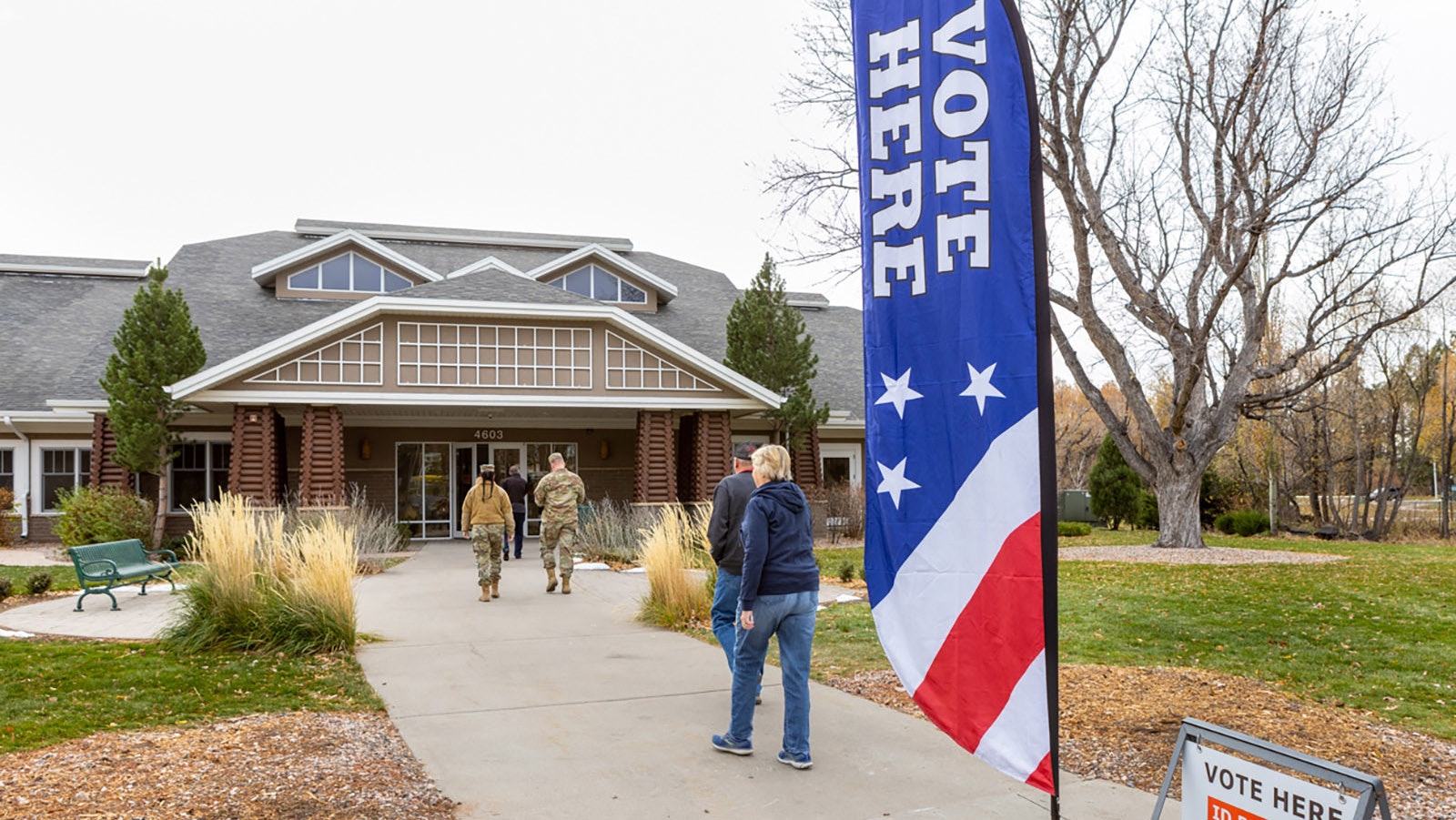A lawsuit challenging Wyoming’s law prohibiting campaigning within 100 yards of a polling place on Election Day was struck down Monday.
A federal appeals court has overturned a 2021 Wyoming federal district court decision that had found the Cowboy State’s ban on electioneering within 100 yards, or 300 feet, of a polling place on Election Day violates the First Amendment.
Three judges from the federal 10th Circuit of Appeals found that because electioneering restrictions relate to the First Amendment, free speech and the right to vote without intimidation, restrictions on political speech can face intense scrutiny in law.
“We are thus persuaded, as Defendants argue, that the reasonableness of Wyoming’s 300-foot buffer zone is evident from a ‘long history, substantial consensus and ... common sense,’ notwithstanding the absence of well developed legislative history,” Judge Veronica Rossman wrote in the court’s opinion.
Many laws like the buffer zones in Wyoming have been set up in response to concerns of voter intimidation and coercion when people go to cast their votes.
Reaction
Wyoming Attorney General Bridgett Hill declined to comment as the case may be ongoing at a district court level.
Political activists John Frank and Grassfire LLC originally challenged the law, claiming people have a right to campaign and gather signatures closer than 100 feet to polling places. Grassfire has since dropped out of the lawsuit, but Frank is still involved.
Frank has expressed a desire to distribute campaign literature and campaign bumper stickers within the bumper zone.
Steve Klein, a Washington, D.C., attorney and member of Wyoming Liberty Group, a nonpartisan group that encourages citizen participation in government and free speech, is representing the plaintiffs in the case.
Klein told Cowboy State Daily he was disappointed with Monday’s decision and believes there is no rhyme, reason or historical basis behind the size of Wyoming’s election buffer zone.
“The opinion sets up a ‘heads-I-win, tails-you-lose’ paradigm for the government,” he said. “They can either provide evidence that the zone needs to be that large or just say ‘voter intimidation.’”
Klein also said during a 2021 deposition that former Wyoming Elections Director Kai Schon admitted the only reason the buffer zone is necessary is because it’s the current law, which Klein finds “a disturbing precedent.”
The 10th Circuit said U.S. Supreme Court precedent does not require the state to prove why 100 yards is an adequate distance.
“Instead, because the state seeks to ‘protect the act of ballot-casting[,] rather than the electoral process in some larger sense,’ it need only demonstrate the reasonableness of its response and its avoidance of significant impingements on constitutionally protected rights,” Rossman wrote.
Case Background
In 2021, U.S. District Court Judge Nancy Freudenthal ruled that Wyoming’s electioneering restriction is unconstitutional. The appeals court disagreed and also found banning political bumper stickers within the zone legal as well.
About six months after Freudenthal rendered her decision, Laramie County Clerk Debra Lee, former Laramie County District Attorney Leigh Anne Manlove and former Wyoming Secretary of State Ed Buchanan appealed to the 10th Circuit.
It is illegal in Wyoming to distribute electioneering materials, which can include petitions, campaign fliers, political signs and other political documents, within 100 yards of an active polling place on Election Day and within 100 feet during the 45-day absentee voting period.
Wyoming had a buffer zone of 60 feet prior to 1973, but that was later increased to 300 feet. A 1988 lawsuit, NBC v. Karpan, forced the Wyoming Legislature to allow exit polling within the buffer zone after an outright ban was found to be unconstitutional.
In 2006, Wyoming again amended its electioneering statute, creating a 300-foot buffer zone around absentee polling places that would remain in place throughout the 45 days before an election. In 2018, the Legislature then reduced the absentee voting buffer zone to 100 feet.
Relevance
The electioneering statute also has been enforced against people whose private property falls within the buffer zone. Poll workers have asked property owners to remove campaign signs displayed on private property or have removed the signs themselves.
In 2014, Don Wills, an independent candidate for governor, challenged the state’s 100-yard law, arguing it prevented him from collecting signatures from voters after his volunteers were forced to leave from where they were working outside the Laramie County Courthouse.
A similar instance happened to Republican gubernatorial candidate Foster Friess in 2018 when he was told he had to be 100 yards from the property line of the Cam-plex Wyoming Center in Gillette on Election Day.
Plaintiffs Still Get Some Victories
The appeals court also disagreed with Freudenthal’s ruling that Wyoming’s 100-foot buffer around polling places on absentee balloting days is constitutional, handing a small win for the plaintiffs. The court said it is unconvinced that Wyoming’s Election Day electioneering laws could also be applied uniformly throughout the entire 45-day absentee voting period.
The court remanded this part of the case back to the district court and says the court should consider whether it’s constitutional after considering the geographic and overall scope of the law.
The court also ruled in favor of the plaintiff’s claim that the state has been over-enforcing the law when it comes to deciding what constitutes electioneering and remanded that issue back to district court as well.
“I am glad that the court recognized the potential problems with the absentee polling place zones and potential overbreadth issues,” Klein said. “Censoring any form of electioneering in and 100 feet around, for example, the Laramie County Government Complex for 45 days just because there are some voting booths set up near the snack bar in the atrium is a free speech calamity.”
Klein had previously told Cowboy State Daily that if they lost their appeal, he would encourage his clients to take their case to the U.S. Supreme Court. On Monday, Klein said he and his client are considering their options for appeal or to continue the case at the district court level.
Leo Wolfson can be reached at leo@cowboystatedaily.com.





